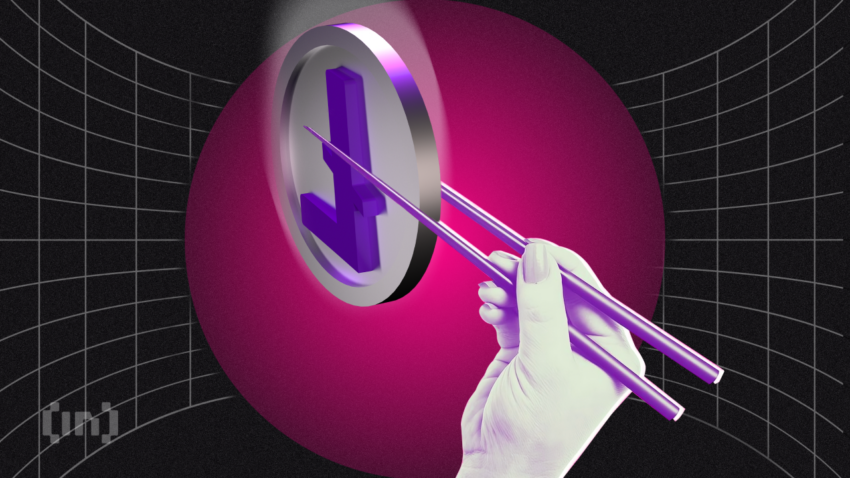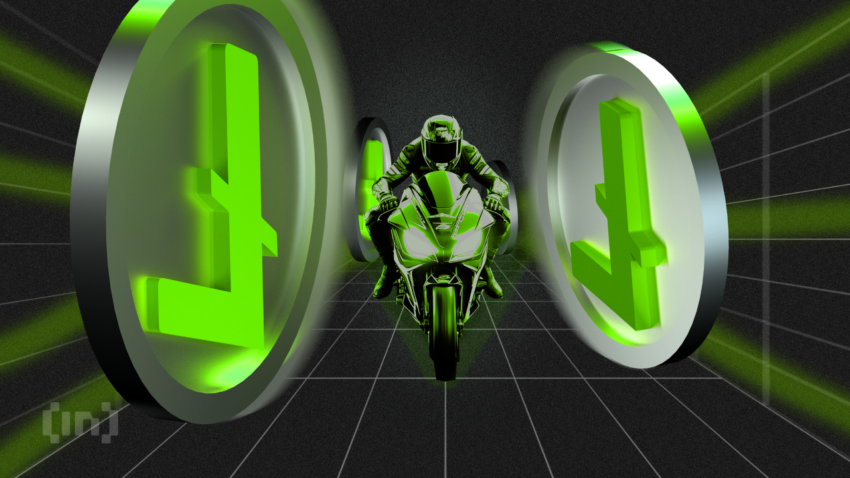Mining Litecoin can be enable you to profit from automated work. But how does it work, and can you get involved? This guide looks at how to get started with Litecoin mining (solo or mining pools) and what you can likely expect when involved. Here’s everything you need to know in 2025.
KEY TAKEAWAYS
► Litecoin mining can be done solo or in a pool, with pool mining offering more consistent rewards and solo mining requiring higher investments.
► To mine Litecoin, you need a wallet for storing your earnings and mining hardware such as ASIC miners, with software to manage the process.
► Cloud mining is an alternative for those without powerful hardware, though it typically offers lower rewards.
►Litecoin mining can be profitable if you already have the necessary hardware and can manage electricity costs, but starting from scratch involves higher upfront expenses.
How to start mining Litecoin

To start mining LTC, you must:
- Choose a mining method
- Set up a Litecoin-compatible crypto wallet
- Configure your mining equipment
- Start mining and keep track of your perfomance.
Here’s some further insight into the process in a more detail.
1. Choose a mining method
Before you start mining, deciding if you’d like to mine solo or in a pool is important. Solo mining ensures you’re not sharing rewards with any other miners. That said, pool mining means you’re much more likely to see a reward, even if you have to split it up with others.
Solo mining means paying much more in electricity fees and relying entirely on your own setup rather than the power of others as well. All of these factors should be considered when mining Litecoin.
2. Setup a Litecoin wallet
Naturally, if you expect to make a profit from mining Litecoin, you will need a wallet to store your coins. Thankfully, there are many wallets available on the market. Be sure to safely store your private keys and practice good operational security to ensure that your wallet remains safe.
3. Configure your mining hardware/software
To begin mining Litecoin, you need to configure both your hardware and software correctly. The most efficient way to mine Litecoin is with an ASIC (Application-Specific Integrated Circuit) miner, such as the Antminer.
Once you have your hardware, you’ll need to connect it to mining software like CGMiner or MultiMiner, both of which are popular choices for ASIC miners. If you are joining a mining pool, you will have to configure your hardware to the mining pool’s server address and port.
4. Start mining and monitor your performance
Once your hardware and software are configured, you can start mining Litecoin. Make sure to regularly monitor your mining rig’s performance, including hash rate, temperature, and energy consumption.
Tools like Minerstat or Awesome Miner can help track performance metrics, optimize your mining settings, and alert you to potential issues.
Considerations before mining Litecoin
That said, getting involved with a pool might cost some entry fees, but your chances of getting a reward are much higher. Once you’ve decided on a preferred mining method, it’s time to get started.
No matter which method you choose, you’ll need a Litecoin miner — a reasonably powerful GPU or CPU — to get started.
How to choose Litecoin mining software

When it’s time to decide on Litecoin mining software, there are many to choose from, and some are free to get started on if you’re just using a GPU or CPU.
Some examples of Litecoin mining pools include but are not limited to, Litecoinpool.org, Antpool, and Multipool. Before deciding on one, make sure it supports your hardware of choice, as well as pay attention to their fees.
Some charge more than others for mining Litecoin, certain things like trading fees; in addition, they also may have specific thresholds for withdrawals.
When you’ve honed in on a preferred option, you will need a crypto wallet to store your Litecoin. Some Litecoin mining pools will come with one built-in, but it’s generally best to use an external wallet like a hardware wallet, a Litecoin wallet or a desktop/mobile one.
That way, in case something happens to the Litecoin mining pool, such as an attack by a bad actor, your assets are protected.
As your device mines, any rewards will be automatically deposited into your wallet.
The basics of mining are fairly easy to understand, but like with all things crypto, the deeper you go, the more there is to process. If you would like to learn more about mining, you can find out more by asking our experts in the BeInCrypto Telegram group.
Is Litecoin worth mining?
If you’re equipped with the right setup and can manage electricity costs, mining Litecoin can indeed be a lucrative endeavor. Unlike Bitcoin, mining Litecoin is less costly and quicker, not demanding the powerful and pricey rigs needed for more complex mining algorithms.
For those in the crypto community with a moderately powerful setup, there’s a financial advantage as they’re already a step ahead in getting started with mining.
It’s important to note that profits are not guaranteed when mining Litecoin. Ensure you do your own research and are aware of the potential risks and losses before beginning your mining journey.
Similarities between Bitcoin and Litecoin

While mining Litecoin is certainly more profitable than mining Bitcoin if you’re a beginner, the two assets do have some similarities. For one, both serve as a digital form of money. They also operate on proof-of-work blockchain networks — Litecoin is a fork of Bitcoin’s blockchain network.
That said, the similarities stop there. Litecoin is a cheaper asset, often considered the digital silver to Bitcoin’s digital gold. Litecoin transactions are almost four times faster than Bitcoin’s on average, and with cheaper transaction fees at that.
The differences between the two assets are enough to make mining Litecoin a much simpler process. Both block rewards halve every four years and also have a hard cap.

In August 2023, LTC experienced its third block reward halving, a significant milestone for the cryptocurrency. The first halving occurred in August 2015, at a block height of 840,000, followed by the second in August 2019, at a block height of 1,680,000.
This recurring event marks crucial moments in Litecoin’s timeline, impacting miners’ rewards and potentially influencing the coin’s value.
How long does it take to mine one Litecoin?

It takes an average of 45 days to mine an entire Litecoin with one of the most powerful hardware mining devices, a testament to crypto mining’s profitability potential, even when conducted from home.
When it comes to block size, the right setup can commit a block to the Litecoin blockchain in just 2.5 minutes, significantly faster than Bitcoin mining from home, which typically takes about 10 minutes per block. However, this duration can vary based on the difficulty of Litecoin’s blocks.
The higher the difficulty or hashrate, the longer the mining process takes. Each successfully mined block releases 25 LTC. In contrast, for those looking for less resource-intensive methods, staking presents an alternative, offering rewards without the extensive hardware requirements of traditional mining.
Cloud mining LTC
If you don’t have access to a powerful PC or mining hardware, you can always cloud mine Litecoin. To do so, you’ll want to search for a cloud mining company that supports Litecoin. Examples of such companies include but are not limited to IQMining and BestCloudMining.
These groups already have large mining hardware groups, and you’re paying them for access. As a result, the company pays you in Litecoin based on your contribution.
Different companies charge different transaction fee rates and have various minimum thresholds. Also, rewards are likely to be cheaper than traditional mining would be. That said, the barrier to entry is much lower than otherwise.
Is Litecoin mining profitable?
The profitability of mining depends entirely on your cost barrier to entry. If you already have the hardware required, it’s going to cost much less despite the energy fees. However, starting from scratch will cost you much more than otherwise. If you can manage that and budget correctly, you can potentially profit from mining Litecoin, although this is not guaranteed and will depend on the market.
Frequently asked questions
What is Litecoin?
What is cloud mining?
What are some Litecoin mining pools?
Is Litecoin more accessible than Bitcoin for mining?
How to mine LTC in 2025 ?
Which miner is best for LTC?
How much can you make a day mining Litecoin?
Which Litecoin mining pools should I join?
Is cloud mining for Litecoin worth it?
Disclaimer
In line with the Trust Project guidelines, the educational content on this website is offered in good faith and for general information purposes only. BeInCrypto prioritizes providing high-quality information, taking the time to research and create informative content for readers. While partners may reward the company with commissions for placements in articles, these commissions do not influence the unbiased, honest, and helpful content creation process. Any action taken by the reader based on this information is strictly at their own risk. Please note that our Terms and Conditions, Privacy Policy, and Disclaimers have been updated.




